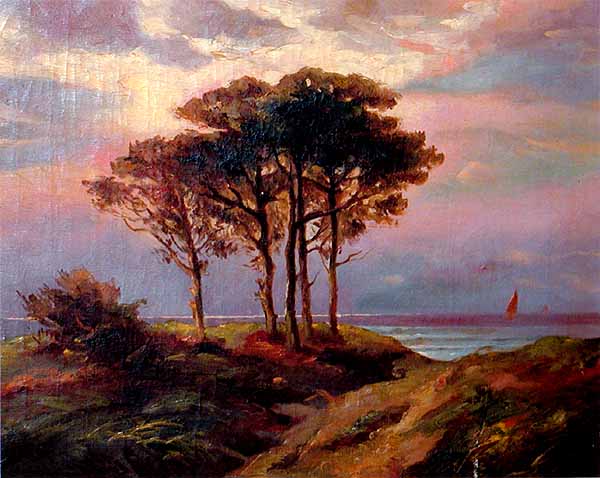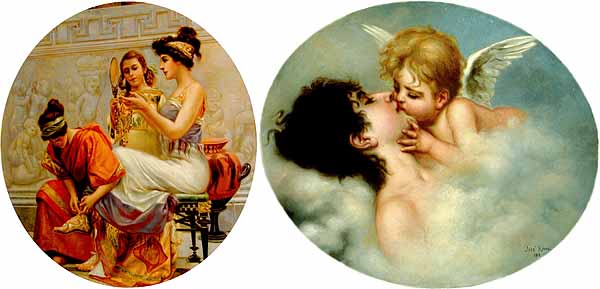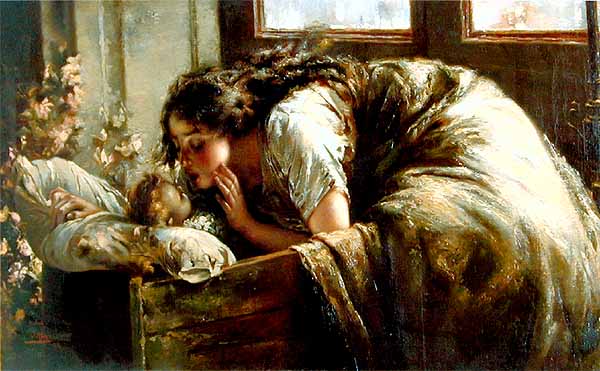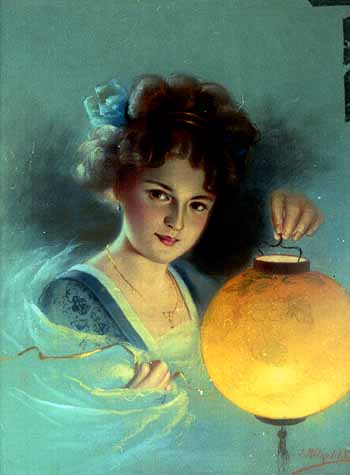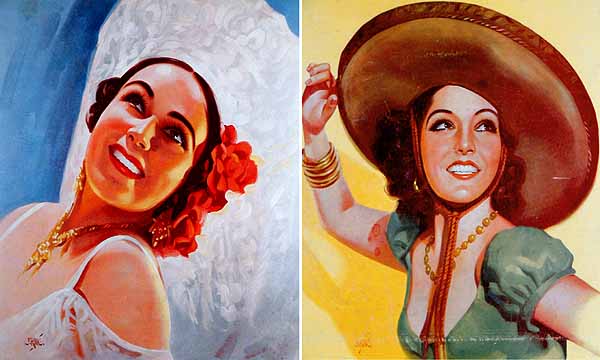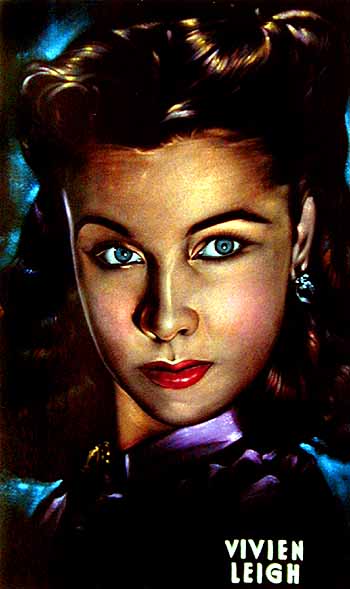
|
Copyrighted Material -CLICK for information |
|
Back |
 |
José Rivas
(1899 - 1969 ) By Gene Magallanes Rivas |
|
Photo of artist with his mural for the film, Mrs. Miniver (1941) Rivas - 001 |
|
Beginnings |
|
Work in Oil (1917) Rivas - 002 |
|
Early Entrepreneur
José Rivas started producing marketable oil paintings before he was ten-years old, and secured a continuous income selling paintings, especially portraits and religious subjects. His photographic works depicted natural scenery and are noted for true perspective and outstanding balance of composition. The two artists, father and son, often traveled to Mexico City to attend major exhibits of European art and to purchase the finest art materials available from the continent.
At home in their state of Guanajuato, the Rivas family lived comfortably on income from art commissions. The men would regularly go hunting and José took it upon himself to bring in fresh game fowl for the family dinners. Being able to afford the latest shotguns and rifles from the United States, José became a skilled marksman, and remained so for the rest of his life. |
|
Greek Princess (1917) and Cupid's Kiss (1918) Rivas - 003 |
|
From 1920 through 1923, José Rivas worked with his father on two substantial commissions which involved numerous oil paintings and ceiling and dome murals for Catholic churches in southern Guanajuato. These magnificent murals can still be seen in the Cathedral in Salamanca and the church of Santiago Apóstol in Valle de Santiago.
|
|
The Resuscitation (1920) Rivas - 004 |
|
Los Angeles
José Rivas was a young member of the underground Cristeros society. This group eventually turned into a radical guerrilla movement and engaged in a long period of bloody combat with the newly established Revolutionary government. But before violence became an important element of the society, José Rivas fled with his parents' family in September of 1923. He relocated with them to Los Angeles, California where they took up residence in a rented house at Seventh and Soto streets. Most of José's art completed during his life in Mexico has been lost, but the Rivas family retains several oil and pastel works from this period, including a hauntingly beautiful painting titled, “The Resuscitation,” showing a desperate mother reviving her sick infant. |
|
Pastel, Young Girl With Light (1919) Rivas - 005 |
|
Two Syndicated Magazine Covers (1930s) Rivas - 006 |
|
Vivien Leigh as Scarlett O'Hara (1939) Rivas - 007 |
|
In 1928, José Rivas married the love of his life, the beautiful María de Jesús Mora. The couple soon relocated to San Francisco where José had secured full-time employment with Fox West Coast Theaters. Not long after, he gained assignments with Paramount Pictures.
The couple raised five children and lived the rest of their lives in the Mission district of the city. Another reason why José moved to San Francisco was to avoid competing with his father in the same city for fine art commissions. |
|
Joan Crawford (1930s) Rivas - 008 |
|
Cinema in Oils
While working for Fox West Coast Theaters, José Rivas often produced large scale promotional murals for movies such as Mrs. Miniver and Gone With The Wind. Other large oil paintings featured promotional portraits of Greta Garbo, Joan Crawford, Spencer Tracy, and Errol Flynn. During the late forties he produced many magazine covers and illustrations which were syndicated and appeared in numerous Sunday newspaper supplement magazines such as the Five Star Weekly. Two popular series of covers that he produced during this period were portraits of various Native American tribal members, and a series of beautiful women. |
|
Rivas at the easel at examples of magazine glamour art (1930s) Rivas - 009 |
|
Appreciating the West
A member of the prestigious Society of Western Artists, José Rivas painted throughout his entire life, remained happily married, and raised his five children. His hobbies always included his nature photography, frequent trips to the California coast and redwood forests, and reading suspense and mystery books, especially the Western novels of Zane Grey. As a diversion, he liked to paint watercolor seascapes of the docks, marinas, and fishing fleets of San Francisco and surrounding harbor towns and villages. In his retirement years, he worked at home and continued painting a steady flow of oil portraits. Described as colorful and yet classical, his portraits were admired for their likeness and cheerful expressions. In these later years, he augmented his income by giving workshops on his portraiture techniques, and won a number of commissions for portraits of San Francisco dignitaries, such as Archbishop McGucken. Late in life, he was able to realize his dream of going to Paris and visiting the Louvre. |
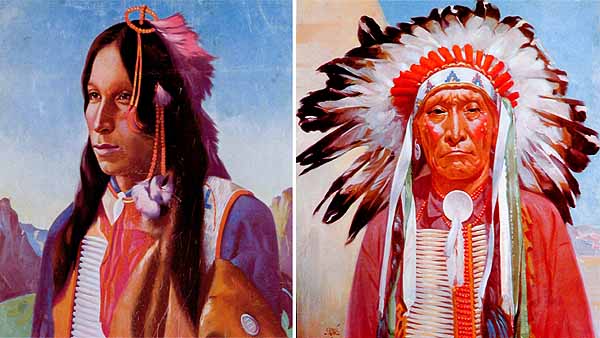
Examples of cover series on American Indians (1940s) Rivas - 010 |
|
José Rivas died of a heart attack shortly after his seventieth birthday on March 22, 1969. He was survived by his wife and four of his children. Fortunately, the Rivas family retains over one hundred pieces of his work that represent all the periods of his life in art.
Whether it be of nature, landscapes, children, or the loveliest of women, Josê could see inspiring subjects in everyday life. The family remembers him staring at a simple wildflower, captivated by its inherent beauty. |
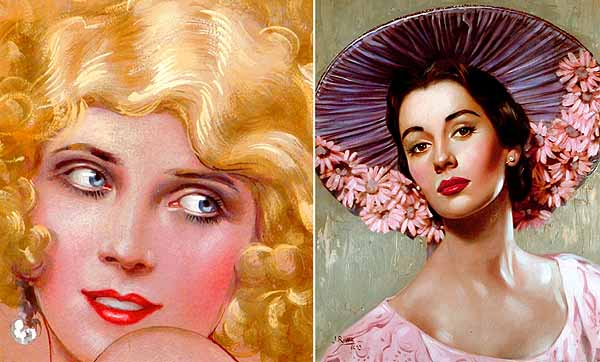
30 years of glamour: pastel blonde (l) and oil of Maggie McNamara in 3 Coins in the Fountain (1930s/1955) Rivas - 011 |

